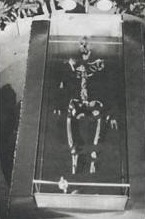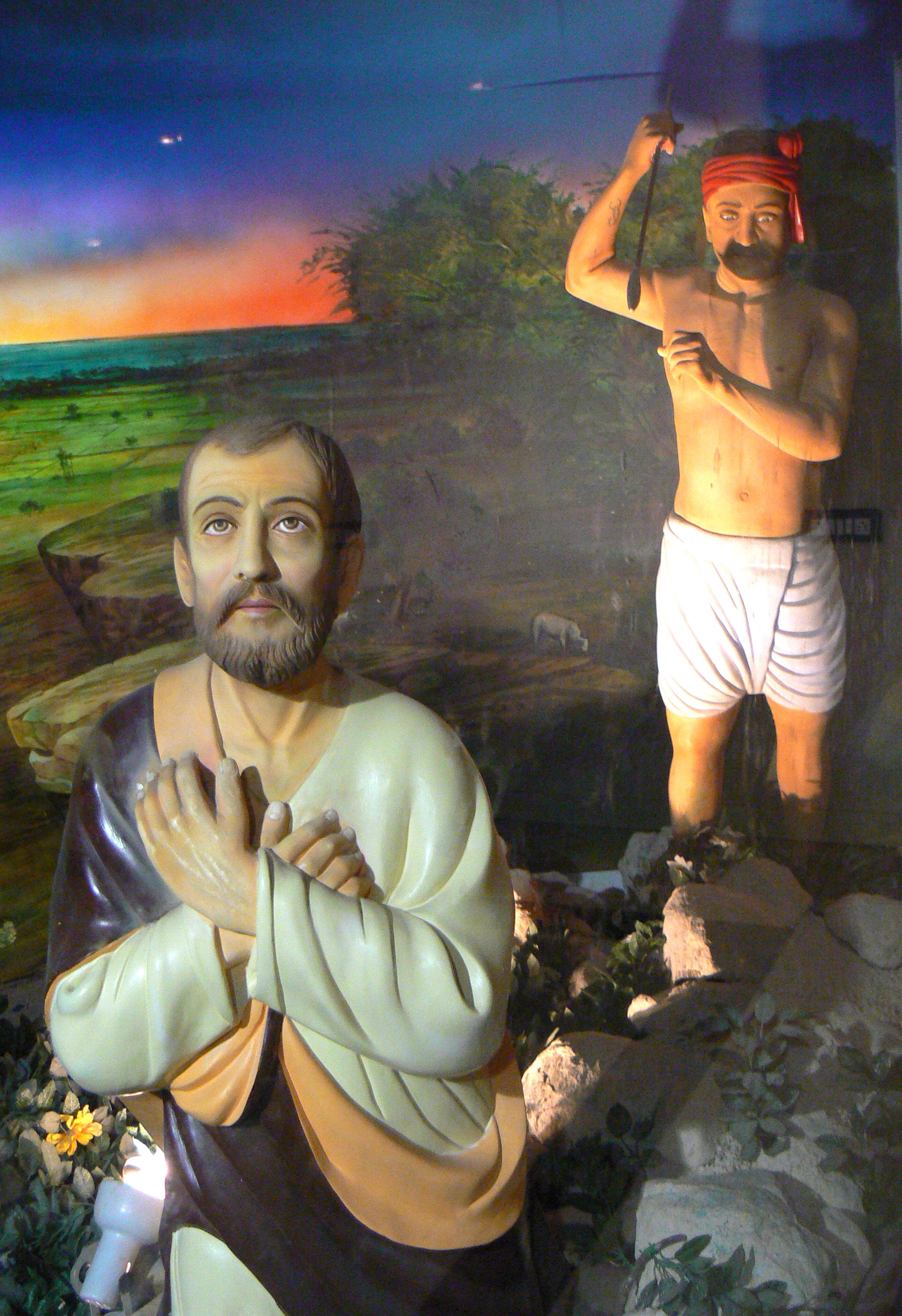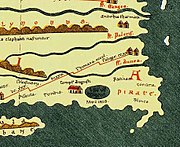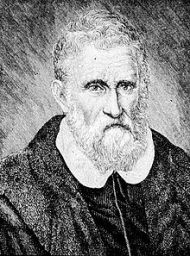“I therefore on behalf of Hindus and those others who proudly acknowledge that their ancestors are Hindus, warn this Karunanidhi-Sonia duo to desist from trying to patronise the falsification of history about the presence in Tamil Nadu of Saint Thomas, to legitimise the Portuguese destruction of the Shiva temple to build the Santhome Church. ” — Dr. Subramanian Swamy



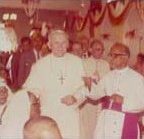



The silence of Pope John Paul II on St. Thomas during his visits to India in 1986 and 1999, and the categorical statement of his successor Pope Benedict XVI in 2006 that St. Thomas did not visit South India, put the cap on the St. Thomas fable for all time to come – except in India. In India the Church operates rather like the European Church operated in the Middle Ages: the Pope in Rome may say what he likes but the bishop in his Indian diocese will do what he likes in connivance with the local government so long as he can deliver the Christian vote to the state’s politicians. When Dr. Koenraad Elst, an agnostic “cultural Catholic” scholar from Belgium writes in the foreword of this book that “in contrast with European Christians today, Indian Christians live in a seventeenth century bubble, as if they are too puerile to stand in the daylight of solid historical fact, … at the command of ambitious “medieval” bishops who mislead them with the St. Thomas in India fable for purely selfish reasons”, he has understood the Indian Christian and the Indian Church exactly. Therefore it is not surprising that The Indian Catholic, Kochi, reported on 12 June 2008 that:
The Archdiocese of Madras-Mylapore is planning to produce a 300 million rupee movie on St. Thomas, one of the 12 apostles of Jesus Christ, revered as the Apostle of India.
Archbishop A.M. Chinnappa, who heads the archdiocese, presented the 30 crore project before a meeting of Kerala Catholic Bishops’ Council seeking their support this week.
The project, scheduled to be inaugurated by Tamil Nadu Chief Minister M. Karunanidhi, is expected to match Hollywood big-budget movies such as Ben-Hur and The Ten Commandments in budget and in quality.
Church officials plan to launch the project on July 3, the feast day of St. Thomas, in the San Thome Basilica campus in Chennai. The 70-mm, two-and-half-hour feature film would have the bigwigs of Indian film industry on the credit line.
Indian Cardinal Ivan Dias, Prefect of the Sacred Congregation of the Propagation of Faith, supports the project along with the bishops in Tamil Nadu, media said quoting Archbishop Chinnappa.
St. Thomas is believed to have arrived in Kerala in 52 AD and established seven churches on the western coast. Tradition also holds that he was martyred in 72 AD in Mylapore. Hence the churches in Kerala and Tamil Nadu have special importance for the movie, said the archbishop.
The archbishop also hoped that a film on the life of St. Thomas would have spiritual consolation for people of all walks of life as it evolved around the theme of human equality and dignity for all.
The film will be made in Tamil first, then in Malayalam and Hindi and later dubbed into various other languages, including English and French, according to Church officials.

In response to this announcement, we wrote on The Ishwar Sharan Archive website that Roman Catholic bishops in India, rather than making a movie on a fictitious first century Christian missionary, owe Hindus an abject apology and crores of rupees in reparations for the Church’s crimes in India over the centuries. But if they insist on the Rs. 30 crore movie, are they going to tell the public the following facts about Judas Thomas as recorded in the Acts of Thomas, that:
- Thomas was the look-alike twin brother of Jesus;
- Jesus sold Thomas as a slave for thirty pieces of silver;
- Thomas deceived the kings of Parthia-”India” who gave him respect and hospitality;
- Thomas was a thief;
- Thomas abducted and locked-up women;
- Thomas engaged in various forms of black magic; and
- Thomas was executed by a Zoroastrian king who had initially shown him mercy and asked him to repent of his crimes and leave the country.
Are the bishops going to tell the public this ancient apocryphal story? Or are they going to twist the tale as their Portuguese predecessors did and make Brahmins the villains of the piece and a Hindu king the assassin of a Christian saint?
The St. Thomas in India legend was invented to vilify Hindu priests and malign the Hindu community. It adds insult to injury as Hindus were and are today its real victims, not Christians and their apostle Thomas. It is a vicious communal tale created by a ruthlessly colonizing Roman Catholic Church, and it has no place on the modern Indian cinema screen. That Catholic bishops should even consider such a production tells us a lot about the Catholic Church in India today.
But what we and the historians of the last two hundred years may say and think about St. Thomas doesn’t matter in today’s racist Dravidian Tamil Nadu state. Peer Mohamed in the Deccan Chronicle, Chennai, reported on 24 June 2008:
Call it the Dasavataram impact. A Rs. 50-crore-plus mega production in silver screen on Saint Thomas, one of the twelve apostles of Jesus Christ, who had spread Christian faith in Tamil Nadu and Kerala, is underway.
A period film on St. Thomas spanning continents is to be made in Tamil first with the help of technicians from Hollywood, Bollywood and Kollywood. Chief Minister M. Karunanidhi is launching the ambitious project of the Catholic Archdiocese of Mylapore on July 3, 2008.
“We are not looking for a superhero like Kamal Hassan or Vijay to play the lead role of St.Thomas. When Mel Gibson made Passion of the Christ, he chose James Caviezel, a look-alike of Jesus to play the lead. We are searching for someone who resembles St.Thomas,” said Dr Paulraj Lourdusamy, the chief researcher and script-writer of the film.
Though the film is a tragedy, ending with the killing of St. Thomas in Chennai, it will have enough entertainment with nine songs.
The blueprint of the film says, “In the two songs that Saint Thomas sings in Kerala, 22 types of dances of Kerala with their distinct music will be included. In a song that St. Thomas sings in Tamil Nadu, we will present 12 types of dances of Tamil Nadu and their special music as the background to the songs.”
The story begins with the journey of the apostle to Edessa, a town in Syria around 29 AD. Thomas’s travel through Persia to Taxila in modern Afghanistan (sic) and return to Jerusalem is also covered. He reaches Kerala by around 52 AD and the next 20 years of preaching Christian faith in the continent is the major part of the film. St. Thomas’s meeting with Tiruvalluvar is an interesting part of the story.
His encounter with the “reported animal and human sacrifice in the Chennai of first century” may create some controversy once the film is ready for release in 2010.
The Deccan Chronicle, it should be noted, is a popular pro-Christian, pro-Congress newspaper. It could not resist the last line about animal and human sacrifice in Mylapore, though in fact there are no records at all for first century Mylapore and the records that do exist for later centuries are moneylenders account books. Tamizhchelvan wrote to the newspaper two days later on June 26th:
This is with reference to the report Rs. 50 crore film on St. Thomas (DC, June 25). It has been proved beyond doubt by historians that the St. Thomas history propagated by Christians of South India is a myth. Even the Christian records talk about different Thomases at different periods and the Vatican has not upheld even one! The so-called encounter between Thomas and Tiruvalluvar is also a concocted one to give a Christian colour to Tirukkural and draw a parallel between Bible and Tirukkural. The South Indian Christian community has lost its foundation after the categorical statement of Pope Benedict, which demolished the myth of St. Thomas, and this attempt of making a film on Thomas is just to reinvent the myth and establish it again in the minds of the gullible masses, and it is unfortunate that the chief minister is helping such a dubious cause.

Tamil scholars agree that the Tamil saint and cultural icon Tiruvalluvar lived before the Christian era, dating him ca. 100 BC with some scholars dating him as early as ca. 200 BC. Whatever the exact date, he could not have been a contemporary of St. Thomas. He lived his whole life in Mylapore and the Tamil year is dated from his birthday in January. His samadhi shrine is believed to have been close by or in the courtyard of the original Kapaleeswara Temple on the Mylapore sea front. Tiruvalluvar’s shrine and the Shiva temple were destroyed by the Portuguese in the sixteenth century. The Deccan Chronicle, continuing its report on the mega-movie project, said on July 2nd:
Superstar Rajinikanth may play the role of ancient Tamil poet Tiruvalluvar in the Rs 50-crore-plus movie St. Thomas being produced by the Catholic Archdiocese of Chennai-Mylapore. The film will also have actors like Ajith, Vijay and Vikram in guest roles, according to the film crew.
“The film is to be launched by chief minister M. Karunanidhi on Thursday. We are in discussion with Hollywood actor James Caviezel who played Jesus in Passion of the Christ. He may act in our film as Jesus. Some other Hollywood actor will play St. Thomas,” said Dr Paulraj Lourdusamy, chief researcher and scriptwriter of the film.
“An important part of the film is St. Thomas’s meeting with sage poet Tiruvalluvar. We thought Rajinikanth would fit that role perfectly. We are trying to discuss the subject with him,” Paulraj added.
Dr. Paulraj who has three doctorates earned from various foreign universities, spent one year in libraries across the world to find the existing literature on St. Thomas. Well-versed in French, he did the script in French first and then in English.
“The script is currently being translated simultaneously into Tamil and Malayalam. The film will be made in Tamil and Malayalam first. The shoot will be conducted in Idukki and Munnar region in Kerala which still preserves the 2,000-year-old biodiversity intact,” said Mr. Sekar, production manager of the film.
The film is to be produced in the name of St. Thomas Apostle of India Trust which has Archbishop A.M. Chinnappa, Deputy Archbishop Lawrence Pius, Treasurer of the diocese Mr. Ernest Paul and Dr. Paulraj as office-bearers.
And finally the day after the famous launch of the infamous film project by an Archdiocese known for its criminal bishops, the Deccan Chronicle reported on July 4th:
Chief Minister M. Karunanidhi has asserted that the DMK-led alliance would sweep the forthcoming Lok Sabha elections in the state.
“Mr Peter Alphonse wished me success in the ensuing Lok Sabha polls. His wishes will come true,” he said while speaking at the launch of the film St.Thomas here on Thursday.
“I am proud of being referred to as the head of a “minority” government as my government has always toiled for the welfare and well-being of the minorities,” said Mr. Karunanidhi.
Donning the believer’s mantle, the normally atheist chief minister said, “Whether I am accepted by God is more important than whether I accept God. I have to help humanity for being accepted by God. The audience applauded when he said this statement, which he had also made in the presence of Sai Baba last year.
The chief minister said the martyrdom of St. Thomas had inspired him in many ways. Drawing a parallel to King Pari of the Sangam age, who was also killed by the conspiracy of several kings, he said, “History remembers those who were killed by conspirators. St. Thomas was also a victim of conspiracy.” Mr Karunanidhi launched the film by operating the movie camera.
State electricity minister Arcot N. Veerasamy, Archbishop A.M. Chinnappa of the Catholic Archdiocese of Chennai-Mylapore, Dr. Paulraj Lourdusamy, chief researcher and scriptwriter of the film, were present at the function.
And finally The New Indian Express, usually the first newspaper to report on St. Thomas and his Indian trials, did not have anything to say until the day after the function on July 5th:
The life of St. Thomas, one of Jesus’ 12 apostles, who lived in India, preached the Gospel and died a martyr at Mylapore, is soon to be made into a feature film. The project will be funded by the Catholic Archdiocese of Chennai, Mylapore and the script has been written by Dr. Paulraj Lourdusamy.
Launching the movie on Thursday at Santhome Church, where St Thomas’ grave is located, chief minister M. Karunanidhi said history chose who to highlight, and St Thomas was one such a noble soul. “We remember the man who was murdered, St. Thomas, but not the one who killed him. History shows us who is to be remembered,” he announced.
On a lighter vein, he added that it seemed fit that an atheist like him should be attending the launch of a movie by a “minority community”, because his government has been hailed a minority government in the recent past. “By asking me if I’ve accepted god, would only degrade your god who is so great. On the contrary, let’s strive to be good people for god to accept us,” the chief minister added. The movie, said Archbishop Dr A.M. Chinnappa of Archdiocese of Madras-Mylapore, would be made in Tamil, Malayalam, Telugu and English, and later, in all languages of the world “It is not an attempt to convert people to our faith but to convey the message of this great saint,” he added. Profits from the movie will be used to establish the Archbishop Chinnappa’s Educational Fund, that will provide higher education to a least 5,000 poor students.
The industry, meanwhile, is rife with rumour that leading stars like Ajith and Vikram have been approached for special appearances in the movie.

Lastly, in a strongly worded statement Dr. Subramanian Swamy, President of the Janata Party, said on July 8th:
The recent announcement that the Tamil Nadu Chief Minister Mr. Karunanidhi will patronize screening of the mega budget movie on Saint Thomas and his fictitious missionary activities in the first century in Tamil Nadu, read with the Union Government’s decision to cancel the allotment of forest land to the Amarnath Shrine Board intended for creating facilities for housing and parking Hindu pilgrims, are a part of the pernicious and sinister attempt to put the Hindus under siege, about which I have been warning the nation for the last three years.
Around the mid sixteenth century, two anti-Hindu brutalities were committed by foreigners. The first was the demolition of the Sri Rama Janmabhoomi Temple in Ayodhya by an agent of the invading, plundering Babar and the second was the destruction of the hoary Shiva temple by the invading Portuguese barbarians. The Hindu society was not prepared for these uncivilised hordes, and hence remained mute witness to the destruction and sacrilege.
But no more. The Hindu has now stood up. Hence there is now a Ramjanmabhoomi movement in the country with a determination to re-build the temple. The Karunanidhi-Sonia duo attempt to demolish the Rama Setu by implementing the Sethusamudram Ship Channel Project was challenged, and despite the duo being in power in Chennai and Delhi, the duo was unable to marshal arguments in the Supreme Court. The Hindus carried the day and the project has gone back to the drawing board.
I therefore on behalf of Hindus and those others who proudly acknowledge that their ancestors are Hindus, warn this duo to desist from trying to patronize the falsification of history about the presence in Tamil Nadu of Saint Thomas, to legitimize the Portuguese destruction of the Shiva temple to build the Santhome Church. The church will have to go, and the Kapaleeshwara Temple re-built on that site. Hindus will do it with the help of sane and civilized Christians if possible, without them if necessary, and despite them if forced. When 83 percent Hindus unite, let those who are seeking to debase Hindu icons by bogus history realize that a religious tsunami will wash them away.
And this was the last we heard of the mega-movie project till today in July 2010. We are told that the project was shelved because of the negative response from Tamil scholars who were very unhappy with the idea that Tiruvalluvar, Tamil Nadu’s famous sage and cultural icon, was to be baptized a follower of Jesus — there was no Christianity as such in the first century and Judas Thomas was himself a practicing Jew. But there is no telling what cultural surprises the Madras-Mylapore Archdiocese might spring on the Tamil people, and even tomorrow a movie with nuptial actors wrapped in wet see-through saris, jiggling their wide fertile hips, may be presented to the public by the present archbishop, with a prayer to Jesus that he may forgive the historical deceits and save the heathen soul of the Dravidian race from the machinations of the heathen Aryan race and its wicked Brahmin priests who are still camped in Mylapore even after so many thousands of years.
11.930000
79.830000







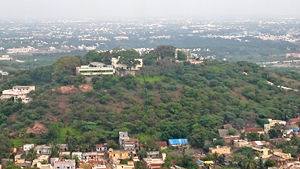



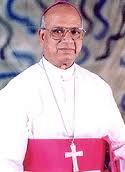

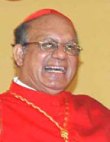





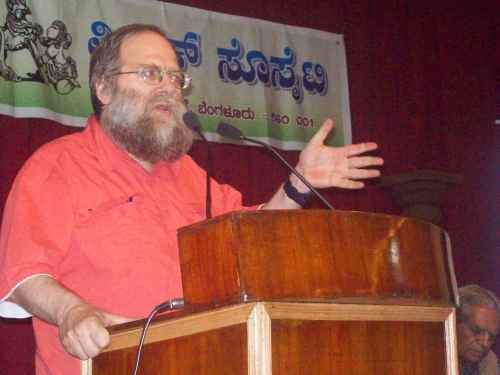























 The real miracle is that nobody has cut this ‘St. Thomas’ pole down and carried it away to their puja room or sold it to a European museum!
The real miracle is that nobody has cut this ‘St. Thomas’ pole down and carried it away to their puja room or sold it to a European museum!








